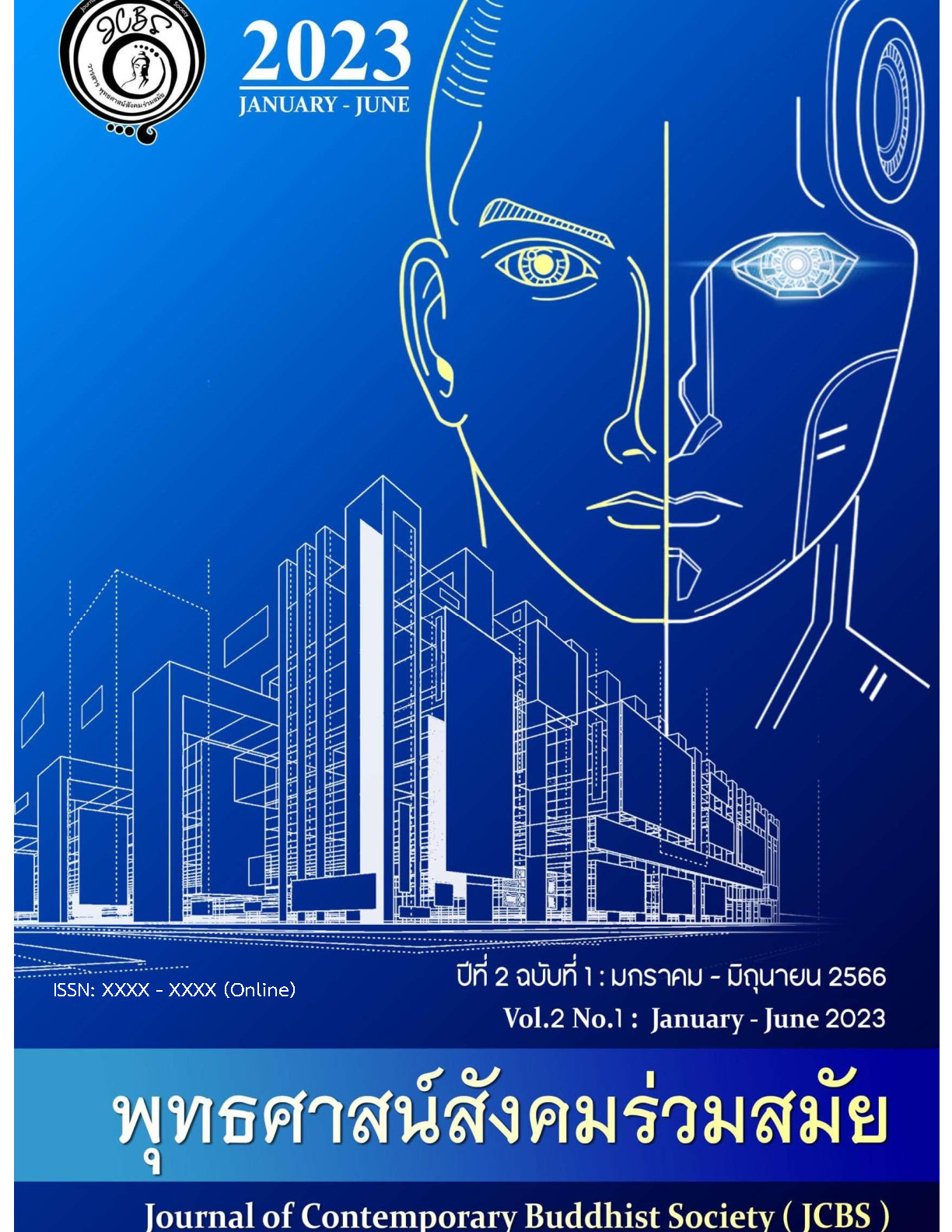ANALYSES OF THE WAYS TO ACCESS MOKHADHAMMA IN THE THERAVADA BUDDHISM
Keywords:
Mokhadhamma, the Ways to Access, Theravada BuddhismAbstract
Analyses of the Ways to Access Mokhadhamma in the Theravada Buddhism was aimed to analyze the ways to access Mokhadhamma in the Theravada Buddhism; to investigate ways of practices to eliminate Kilesa (defilements) founded on the Buddhist principles and to propose the approaches to liberation by ability and perseverance of each individual. The researcher found that in the concept of the way of attaining Mokhadhamma or Bodhipakkhiyaya in the Theravada Buddhism, it included the 4 Satipatthana (foundations of mindfulness); the 4 Sammappadhana (exertion/efforts); Iddhipãda (path of accomplishment/to success); 5 Bala (power); the 7 Bojjhanga (enlightenment factors); and the 8 Magga (the Noble Eightfold Path). The approaches to eliminate defilements founded on the Buddhist principles engaged the 3 Puññakariyã-vatthu (bases of meritorious action); Samathakammatthana (concentration development); and Vipassanãkammatthana (insight development). The researcher recommended that observation of the 5 precepts and meritorious action consisting in mental development should be written in the organizational policy and in practice since they owned low cost. As of further studies, the 4 Sangahavatthu (social solidarity) should be investigated whether it would lead Laities to Nibbana and for religious persons, the principles in deep of Vipassanãkammatthana should be investigated so that the novices and the religious women would gradually practice Dhamma from easiness to rigid routes for their peace of their mind to step into Nibbana.
References
มหาจุฬาลงกรณราชวิทยาลัย. (2539). พระไตรปิฎกภาษาไทย ฉบับมหาจุฬาลงกรณราชวิทยาลัย. กรุงเทพมหานคร: โรงพิมพ์มหาจุฬาลงกรณราชวิทยาลัย.
พระธรรมกิติวงศ์ (ทองดี สุรเดโชม ป.ธ.9 ราชบัณฑิต). [ออนไลน์]. โมขธรรม : คำวัด. แหล่งที่มา: https://kalyanamitra.org/th/article_detail.php? i=2522.
พระธรรมธีรราชมหามุนี (โชดก ญาณสิทฺธิ). (2534). ทางไปนิพพาน. กรุงเทพมหานคร: โรงพิมพ์พระนคร.
พระพรหมคุณาภรณ์ (ป.อ. ประยุตโต). (2556). พจนานุกรมพุทธศาสตร์ ฉบับประมวลธรรม. พิมพ์ครั้งที่ 25. มูลนิธิธรรมทานกุศลจิต: สำนักพิมพ์ผลิธัมม์.
หลวงพ่อปราโมทย์ ปาโมชฺโช. [ออนไลน์]. ธรรมะเพื่อความพ้นทุกข์: สมถกรรมฐาน และวิปัสสนากรรมฐาน. วัดสวนสันติธรรม ออนไลน์. แหล่งที่มา: https://www.dhamma. com/samatha-and-vipassana/
Admin. Buddhist Countries 2023: The Pew Research Center, World Population Review. Online. Retrieved 13 May 2023, from: https://worldpopulationreview. com/country-rankings/ buddhist-countries.
Buswell, Robert Jr.; Lopez, Donald Jr. (2013). The Princeton Dictionary of Buddhism. Princeton University Press. ISBN 978-1-4008-4805-8.
Conze, Edward. Buddhist Thought in India: Three Phases of Buddhist Philosophy. Routledge, 2013) p. 71. ISBN 978-1-134-54231-4., Quote: "Nirvana is the raison d’être of Buddhism, and its ultimate justification".
Gethin, Rupert. (1998). Foundations of Buddhism. Oxford University Press.
Harvey, Peter and Emmanuel, Steven M. A (2015). Companion to Buddhist Philosophy. John Wiley & Sons.
Williams, Paul (2002). Buddhist Thought. Routledge.
Wilson, Jeff. (2010). Saṃsāra and Rebirth, in Buddhism. (Oxford University Press.
Wynne, Alexander (2012). Buddhist Thought. Routledge.
Downloads
Published
How to Cite
Issue
Section
License
Copyright (c) 2024 Journal of Contemporary Buddhist Society = JCBS

This work is licensed under a Creative Commons Attribution-NonCommercial-NoDerivatives 4.0 International License.



